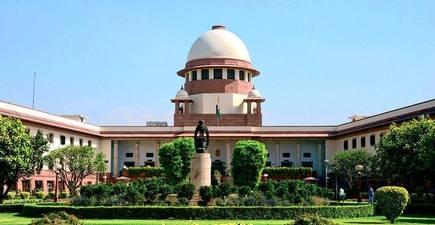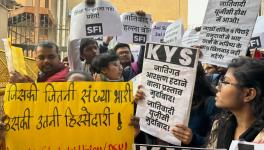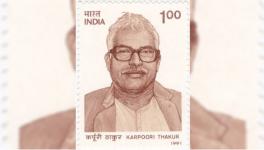Supreme Court’s (New) Reservations Judgment and Its Discontents

Editorial Note: Justice is an indivisible concept. We cannot, therefore, discuss contemporary Supreme Court judgments without also acknowledging the Court’s failure – at an institutional level – to do justice in the case involving sexual harassment allegations against a former Chief Justice. This editorial caveat will remain in place for all future posts on this blog dealing with the Supreme Court, until there is a material change in circumstances.
This Friday, a two-judge bench of the Supreme Court handed down a judgment holding that Article 16(4) of the Constitution is only an enabling provision, and does not confer a “right” to reservations. The context of the case was as follows: in 2012, the government of Uttarakhand decided to fill up the posts in the state’s public services without providing reservations to Scheduled Castes (SCs) and Scheduled Tribes (STs) (paragraph 5). This was challenged, and after a round of litigation before the Uttarakhand High Court, that court directed “the State Government to collect quantifiable data regarding inadequacy of the representation of the Scheduled Castes and Scheduled Tribes in Government services which would enable the State Government to take a considered decision on providing or not providing reservation.” (paragraph 7)
Appellants argued before the Supreme Court that the judgment of the Uttarakhand High Court was wrong, as “there is no constitutional duty on the part of the State Government to provide reservations.” Once, therefore, the government had taken the decision (in 2012) not to provide reservations, that decision could not be challenged (paragraph 8). Appellants further argued that as the collection of “quantifiable data” was a precursor to providing reservations, it followed ipso facto that “there is no necessity for collection of any quantifiable data after the Government has taken a decision not to provide reservations.” (paragraph 8)
The Court agreed with these submissions, and also agreed with its 2016 judgment in Suresh Kumar Gautam v State of UP, where these contentions had been accepted. In paragraph 12 of the judgment, it noted that:
It is for the State Government to decide whether reservations are required in the matter of appointment and promotions to public posts. The language in clauses (4) and (4-A) of Article 16 is clear, according to which, the inadequacy of representation is a matter within the subjective satisfaction of the State. The State can form its own opinion on the basis of the material it has in its possession already or it may gather such material through a Commission/Committee, person or authority. All that is required is that there must be some material on the basis of which the opinion is formed.
This, however, was limited to situations where the State made provisions for reservation. That, however – the Court held – was purely discretionary. Consequently:
As the Government is not bound to provide reservation in promotions, we are of the opinion that there is no justifiable reason for the High Court to have declared the proceeding dated 05.09.2012 as illegal. (paragraph 15)
In other words, there was no obligation upon the State to collect data in order to deny reservations.
There are, however, two problems with this line of reasoning, that I set out below.
Article 16 and Substantive Equality
The first is the Court’s characterisation of Article 16(4) as a purely enabling provision, and its conclusion from that that inadequacy of representation is a matter within “the subjective satisfaction” of the State. This, however, is at odds with the scheme of Article 16 of the Constitution as interpreted by the Supreme Court. As readers of this blog will be aware, until the mid-1970s, the Supreme Court’s position was that Article 16(4) was an exception to the guarantee of equality of opportunity set out in Article 16(1). In other words, 16(4) carved out a space (for inadequately represented sections) where the normal principles of equality of opportunity would not apply. It was, of course, up to the State whether or not it chose to avail of this exception, and provide for reservations.
In NM Thomas, however, that position changed. It was held that Article 16(4) is not an exception to, but a facet of Article 16(1). That changed interpretation flowed from the Supreme Court’s evolving understanding that the Articles 14-15-16 “Equality Code” under the Constitution was not about bare formal equality, but about substantive equality – i.e., equality that took into account existing social and structural disadvantages, and required the State to remedy them. This understanding of constitutional substantive equality has never seriously been questioned after N.M. Thomas, and has recently been reaffirmed (albeit in the contexts of Articles 14 and 15) in Navtej Johar and Joseph Shine.
Consequently, if Article 16(4) is a facet of Article 16(1), then it necessarily follows that what Article 16(1) guarantees is a right to substantive equality of opportunity (and 16(4) is – in the words of NM Thomas – an “emphatic restatement of that right.” Consequently, while it is correct to say that there is no right to reservations (as the language of 16(4) is indeed enabling), there is a right to substantive equality. This, in turn, means that if the status quo involves formally equal treatment of individuals in substantively unequal circumstances – when it comes to appointments or promotions in public services – Article 16(1) is breached.
The Uttarakhand High Court was well aware of this distinction (as it also was in another judgment it delivered a few days later, which I discussed here). Consequently, it did not direct the government to provide reservations. What it did do was direct the government to collect data on inadequacy of representation, so that a decision could be taken on how to remedy existing substantive inequality. This – as Karan Lahiri has argued previously on the blog – is a reading of the scheme of Article 16 that places a “power plus duty” upon the government.
As Lahiri writes
… a constitutional provision conferring power/discretion on a State authority, couched in permissive language, is to be treated as a provision containing a power coupled with a duty, if the failure or conscious omission on the part of such authority to act would nullify the effect of another/other constitutional provision, or render nugatory a constitutional principle emerging from a mosaic of constitutional provisions.
Lahiri then argues that if Article 16(4) was to be read as a purely enabling provision that conferred no duties, this would mean that while there was an obligation upon the State to collect data before it granted reservations, there would be no such obligation if it chose not to do so. However, this would mean that:
There is a hurdle created to pull up backward groups, but none for pulling them down, or for ignoring them entirely. This, I believe, is inconsistent with the equality code of our Constitution, and Article 16 itself contains no textual basis for such asymmetry. It is this asymmetry problem that can be remedied if the Supreme Court recognizes the fact that Article 16 contains within it an enabling power coupled with a positive duty.
Notice that the asymmetry problem is taken care of by NM Thomas’ reading of Article 16: because that reading makes the pulling up of “backward groups” an obligation upon the State. On the Supreme Court’s reading, however, it is made explicit that the government must collect data if it wants to provide reservations/substantive equality (“pull up”), but is not obligated to do any such thing if it wants to deny reservations/substantive equality (“pull down/ignore”). This is obviously at variance with the constitutional scheme.
What about NALSA?
The second problem is a more straightforward one. Recall that in NALSA v Union of India, the Supreme Court had taken judicial notice of the fact that the transgender community was underrepresented in government employment, and on that basis, had specifically directed affirmative action measures under Article 16. It follows from this that if indeed it has been found that a group falls within the scope of Article 16(4), the demands of substantive equality under Article 16(1) require the State to take measures to bring about real and effective parity. Thus, while admittedly there is no free-standing right to reservations, there is a right contingent upon a finding that a particular group is underrepresented.
If that is the case, however, than the obligation can simply be defeated if the State chooses not to conduct the data collection exercise at all. Consequently, it follows from NALSA that data collection to determine inadequacy of representation is indeed an obligation upon the State, as that is the pre-requisite for the further affirmative action that NALSA found mandatory.
Conclusion
It is submitted, therefore, that the Supreme Court’s judgment is at variance with NM Thomas, with NALSA, and indeed with the scheme of Article 16 and the Equality Code. Once we agree that Article 16(1) guarantees a substantive right to equality of opportunity, it necessarily follows – in the words of Lahiri – that a coherent reading of the scheme of Article 16 reveals that the discretion of the State under 16(4) is not unbounded. 16(4) codifies a “power plus duty”: the State is empowered to decide upon reservations, but it has a duty to collect information pertinent to that decision. Any other reading would defeat the basic idea of substantive equality under Article 16(1).
Get the latest reports & analysis with people's perspective on Protests, movements & deep analytical videos, discussions of the current affairs in your Telegram app. Subscribe to NewsClick's Telegram channel & get Real-Time updates on stories, as they get published on our website.
























